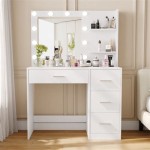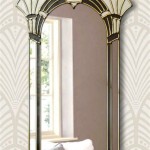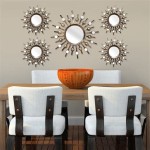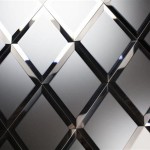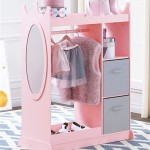How Many Mirrors In A Room?
The number of mirrors appropriate for a room depends on several factors, including the room's purpose, size, and desired aesthetic. There is no single correct answer, but understanding the impact of mirrors on a space can guide effective placement and quantity choices.
Functionality: The intended use of the room significantly influences the necessity and placement of mirrors. Bathrooms typically require at least one mirror above the vanity for grooming purposes. Bedrooms often benefit from a full-length mirror for checking attire. Entryways can utilize a smaller mirror for last-minute appearance checks before leaving the house. In spaces designed for activities like dance or exercise, large mirrors can provide essential visual feedback.
Size and Space Enhancement: Mirrors can create an illusion of greater space, particularly in smaller rooms or those with limited natural light. Strategically placed mirrors can reflect light and visually expand the area. A large mirror on one wall can effectively double the perceived width of a narrow room. Multiple smaller mirrors can also contribute to this effect, though they may create a more fragmented visual experience.
Light Reflection and Brightness: Mirrors can significantly enhance the brightness of a room by reflecting both natural and artificial light. Placing a mirror opposite a window can maximize the influx of natural light deep into the space. Similarly, positioning mirrors near light fixtures can amplify their illumination, reducing the need for additional lighting sources.
Aesthetic Considerations: Mirrors can be incorporated as decorative elements, contributing to the overall style and ambiance of a room. Ornate frames, uniquely shaped mirrors, or strategically arranged groupings can become focal points or enhance existing design features. However, excessive or poorly placed mirrors can create a cluttered or disorienting environment.
Placement Strategies: Careful consideration of mirror placement is crucial for maximizing their benefits and avoiding potential drawbacks. Placing a mirror directly opposite a window can create glare, while placing one opposite a cluttered area will only amplify the visual chaos. Mirrors should be positioned to reflect desirable views or architectural features, enhancing the overall aesthetic appeal of the room.
Types of Mirrors: The type of mirror chosen also plays a role in its impact on the room. Full-length mirrors are practical for assessing outfits and create a sense of height. Smaller, decorative mirrors can add a touch of elegance or personality. Large, frameless mirrors can create a modern, minimalist feel. The style and finish of the mirror frame should complement the overall design scheme of the room.
Feng Shui Considerations: In feng shui, mirrors are believed to influence the flow of energy (chi) within a space. Certain placements are encouraged, such as reflecting beautiful views or lush greenery, while others are discouraged, like placing a mirror directly opposite the front door, which is thought to deflect incoming positive energy. These principles offer additional guidance for those seeking to harmonize their environment.
Minimalist Approach: A minimalist approach to mirror usage might involve a single, well-placed mirror in functional areas like the bathroom or bedroom. This approach prioritizes practicality and avoids visual clutter, creating a sense of calm and spaciousness.
Maximalist Approach: A maximalist approach might incorporate multiple mirrors in various sizes and styles throughout the room. This can create a dramatic and visually stimulating environment, reflecting light and adding depth to the space. However, careful planning is crucial to prevent a chaotic or overwhelming feel.
Specific Room Examples: In a living room, one might opt for a large mirror above the fireplace to create a focal point and reflect light. A dining room could benefit from a mirror placed to reflect a chandelier or a beautiful view. A hallway might utilize a series of smaller mirrors to create a sense of depth and movement.
Avoiding Overuse: While mirrors can be beneficial, overuse can create a disorienting or unsettling effect. Too many reflections can make a room feel cluttered and visually confusing. Careful consideration of the purpose and placement of each mirror is essential to avoid these negative consequences.
Maintenance and Cleaning: Regardless of the number of mirrors in a room, regular cleaning is necessary to maintain their reflective qualities and overall appearance. Using appropriate cleaning solutions and techniques can prevent streaks and smudges, ensuring the mirrors continue to enhance the room's aesthetics and functionality.
Ultimately, the ideal number of mirrors in a room is a subjective decision based on individual preferences and the specific characteristics of the space. By considering the factors outlined above, individuals can make informed choices that optimize the benefits of mirrors while avoiding potential drawbacks.

How Many Mirrors Are Too In One Room

Should You Put A Mirror In Every Room Of Your Home Giant Glass

How Many Mirrors Are Too The Magic Number

Good Life Of Design How Many Is Too

How Many Mirrors Are Too In One Room

Decorating Walls With Mirrors Do S And Don Ts

How Many Mirrors Are Too

7 Ways Mirrors Can Make Any Room Look Bigger Sonoma

How Many Mirrors Should You Use In Your Home Seido

Can You Have Two Mirrors In Living Room



